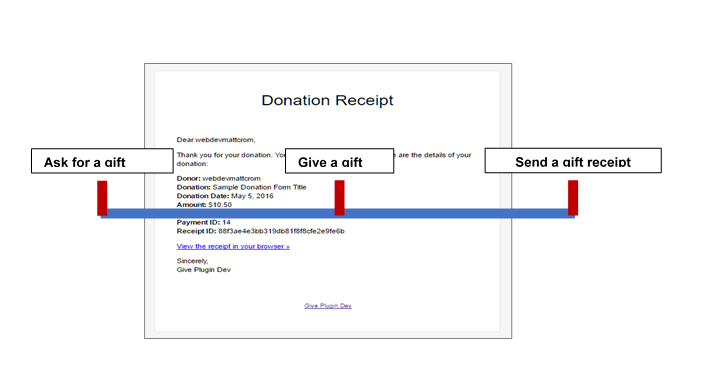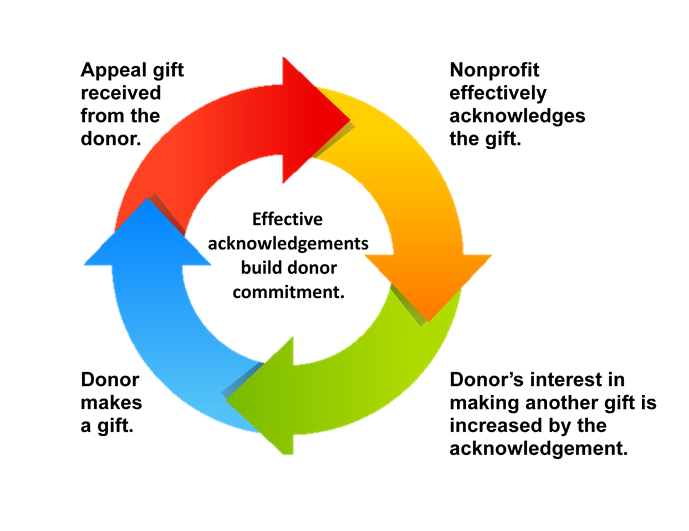Recently published in DMAW Advents Newsletter
The 2016 U.S. Trust Study of High Net Worth Philanthropy found that the primary stated motivations for giving were:
- Believing in the mission of the organization (54%)
- Believing that their gift can make a difference (44%)
- Experiencing personal satisfaction, enjoyment or fulfillment (39%)
- Supporting the same causes annually (36%)
- Giving back to the community (27%)
- Adhering to religious beliefs (23%)
Belief is connected to three of the six responses. Belief is emotional, not rational. Belief is heart, not head. This is why the way we say thank you matters so much.Being more strategic in how you say thank you can help deepen your connection to people that have given to your cause. This one area—acknowledgements—can solve many of your donor retention challenges and help increase multiyear donors, who will drive the majority of your net revenue.
If that’s not enough, consider this:
- Your acknowledgement program can increase your total direct response revenue 3-10%
- Your acknowledgement program can increase loyalty
- Your acknowledgement program can increase donor value
Most organizations think of acknowledgements as a linear process.

Sure, gift receipts complete a linear process. But this type of thinking is too linear—with blinders on as to how you can best connect with donors.
What if, instead of a linear process, acknowledgements were part of a cycle?

Being strategic in how you say thank you is a way to create a pattern with donor engagement.
But how?
First, it starts with being comfortable inserting an offer in your acknowledgement. This may seem foundational, but many nonprofits wrestle with how soon is too soon to ask again.
Effective use of an offer in your acknowledgements can grow the commitment of a donor, fostering their belief in your mission. Remember, belief is a part of the top two reasons that donors give. Belief is highest when someone completes the act of donating.
Therefore, it is in the time of highest belief that you should go further in connecting, and that means making an ask in acknowledgement.
Three Acknowledgement Factors
A more strategic acknowledgement program considers:
Timing
For offline, your acknowledgement should be sent within 72 hours. For online, it should be immediately after the gift is processed by your merchant.
Personalization
This is not a time to be templated. The more personal a thank you, the better. The gift amount and data are no-brainers, but there are likely other pieces of data from the donor’s gift that you can leverage. Forward-thinking nonprofits are going a step further with online acknowledgments by leveraging metadata into personalization, highlighting location and consideration of device type in how they say thank you.
Channel Mix
This is an area where most organizations think too linearly. If someone gives via direct mail, it shouldn’t be the only channel used to say thank you. A transaction channel doesn’t mean it’s the person’s only way to communicate. Pause and think about relationships in your own life. When someone does something special for you, you want to make sure the thank you is meaningful. This might include a combination of channels: direct mail, email marketing, SMS, phone calls and perhaps even a chatbot in social (given that you’ve connected your data points).
The Thank You Challenge
Understanding the theory of a better thank you is the first step to improving.
The next step is more difficult—accepting the challenge of improving your acknowledgement program. Here are two ways that we’ve improved gross and net revenue through optimizing acknowledgements:
Map Your Thank You Journey
If you’re up for it, you can go all-in on a donor journey mapping process to better understand communication points, timing and channel mix for your entire organization. Investing in this process will be worth it. If you’re not ready, grab multiple stacks of post-it notes and begin laying out your thank you journey on a wall or conference room table. Visualizing your current efforts will most likely reveal theories on how to improve it.
Take to Testing
Once you’ve visualized the process, identify two or three variables you can test to optimize your program. We’ve seen variables like a ‘best-of’ newsletter inclusion, matching gifts, and channel integration make a significant impact on retention
So, now I extend the challenge to our whole sector to improve the way we say thank you. On the surface, this may seem difficult, time-consuming, and even a little intimidating as it’s, of course, a transformation of your acknowledgement program. But if it were easy, it wouldn’t be considered a challenge, right?





Leave a comment: